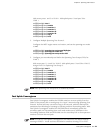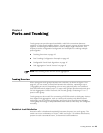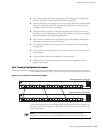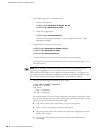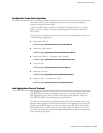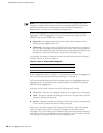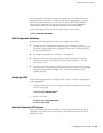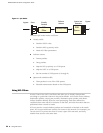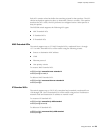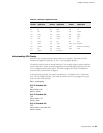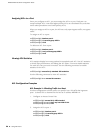Link Aggregation Control Protocol 49
Chapter 4: Ports and Trunking
When the system is initialized, all ports by default are in LACP off mode and are
assigned unique admin keys. To make a group of ports aggregatable, you assign
them all the same admin key. You must set the port’s LACP mode to
active to
activate LACP negotiation. You can set other port’s LACP mode to
passive, to
reduce the amount of LACPDU traffic at the initial trunk-forming stage.
Use the following command to check whether the ports are trunked:
ex2500# show lacp information
LACP Configuration Guidelines
Consider the following guidelines when you configure LACP trunks:
On static trunks, configuration parameters (such as settings for VLAN
membership, ACLs, and QoS) are applied per port. When an LACP trunk group
is formed, these parameters are configured for the trunk ID, which overrides
the port-level parameters.
The range of potential LACP trunk IDs is 13 through 36.
When an LACP trunk forms, the trunk ID is determined by the lowest port
number in the trunk. For example, if the lowest port number is 1, then the
LACP trunk ID is 13.
The LACP trunk ID can change if the link is lost on the lowest port in the group.
When the trunk ID changes, trunk-level parameters are cleared. To avoid losing
configuration parameters, configure LACP trunk-level parameters for all
possible trunk IDs.
Configuring LACP
Use the following procedure to configure LACP for port 7 and port 8 to participate
in link aggregation.
1. Define the admin key on port 7. Only ports with the same admin key can form
an LACP trunk group.
ex2500(config)# interface port 7-8
ex2500(config-if)# lacp key 100
2. Set the LACP mode.
ex2500(config-if)# lacp mode active
ex2500(config-if)# exit
Optionally Reducing LACP Timeout
The LACP timeout period is the number of seconds that elapse before the switch
invalidates LACP data from a remote partner. The default LACP timeout value is
long (90 seconds).



